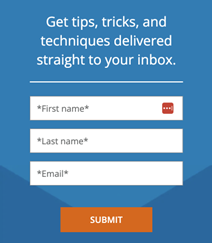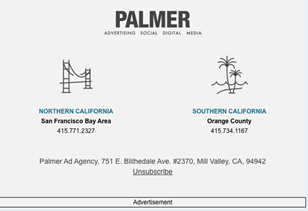Summary:
- Email marketing allows for direct, personalized communication with an engaged audience.
- Opt-in emails ensure compliance, boost deliverability, and build trust with recipients.
- Clear sign-up forms and double opt-ins improve list quality and audience interest.
- Personalization, concise content, and responsive design drive better engagement.
- Regular, consistent sending maintains visibility without overwhelming subscribers.
- Easy unsubscribing and performance tracking are essential for long-term success.
Email is one of the most effective ways to reach and engage with your audience. More than half the world’s population (over 4.2 billion) are active email users. By the end of 2026, that figure is projected to exceed 4.7 billion, resulting in huge potential reach through email.
Emails provide a means of personal communication with existing customers and prospects. Unlike social media or paid advertising, email marketing allows businesses to deliver targeted messages directly to individuals who have shown interest in their products or services. This approach helps build stronger relationships, nurture leads, and guide potential customers through the sales funnel. Email campaigns are also cost-effective, easy to track, and can be tailored to specific audience segments, making them a powerful tool for driving conversions, increasing customer retention, and maximizing ROI.
However, it’s easy for companies to encounter delivery, engagement, and regulatory compliance obstacles when sending sales and marketing emails. For example, emails can be marked as spam if recipients haven't explicitly chosen to relieve them. This not only reduces the effectiveness of the campaign but can also harm a business’s reputation, making it harder for future emails to reach inboxes.
Opt-in emails can help mitigate such challenges by ensuring that communications are sent only to recipients who have specifically demonstrated interest. Getting consent first helps businesses avoid being flagged as spam and the recipients are more likely to recognize and value the content they receive.
Here’s a closer look at opt-in emails and some best practices for developing and sending them. When done correctly, opt-in email marketing can protect you from potential legal repercussions while building trust and engaging recipients at every stage of their buying journey, contributing to business growth.
What is an opt-in email?
An opt-in email is a form of communication sent to individuals who have explicitly given their consent to receive emails from a business or organization. This permission is typically granted when a person subscribes to a newsletter, fills out a form, or signs up for a service to indicate their interest in receiving further information. The opt-in process ensures that the recipient is genuinely interested in the content, which helps businesses build a more engaged and receptive audience.
Opt-in emails are crucial for a business’s sales and marketing efforts because they lead to higher engagement rates, build trust, and maintain compliance with privacy regulations. By focusing on an audience that has willingly chosen to receive communications, businesses can reach better open and click-through rates, ultimately leading to more effective marketing campaigns and increased sales. Moreover, respecting the customer’s consent strengthens brand reputation, fostering long-term relationships and loyalty.
Tips for effective opt-in emails
The more strategic you are in your opt-in emails, the better results you’ll have. Here are some best practices for maximizing effectiveness across design, content, and sending.
 Use clear, compelling sign-up forms: Your opt-in process should begin with a form that is easy to find (such as on your website or a landing page) and complete. Clearly explain what subscribers will receive by signing up, whether it’s a newsletter, exclusive offers, or updates. Use a strong call-to-action (CTA) and keep the form simple, asking for only essential information to reduce friction.
Use clear, compelling sign-up forms: Your opt-in process should begin with a form that is easy to find (such as on your website or a landing page) and complete. Clearly explain what subscribers will receive by signing up, whether it’s a newsletter, exclusive offers, or updates. Use a strong call-to-action (CTA) and keep the form simple, asking for only essential information to reduce friction.- Double opt-ins: By having users confirm their subscription through a follow-up email you can ensure that the subscriber is genuinely interested and maintain a high-quality email list.
- Personalize messaging: Tailor email content to the interests, pain points and preferences of your subscribers. Segment email lists to separate relevant messages to different audience groups. You can even go as far as to have your email system automatically personalize subject lines and email bodies with the recipient’s name or other individualized information.
- Create an engaging design: Emails should be clean, visually appealing and professional. Use a responsive design that looks good on both desktop and mobile devices. Incorporate images, but ensure they’re optimized for quick loading, usually by keeping file sizes smaller. Videos can really increase your engagement rate but it’s best to create thumbnails with links to watch to avoid long loading times. Keeping a balance between text and visuals can help prevent overwhelming the reader.
- Keep content concise: It’s best to keep content concise and to the point. Focus on delivering value by providing helpful information, insights, or offers that are relevant to the subscriber. Use compelling headlines and clear CTAs that guide the recipient toward a desired action.
- Send consistently: Sending emails regularly will help subscribers know when to expect your emails, whether it’s weekly, bi-weekly, or monthly. Just avoid overloading your audience with too many emails. Seeing a lot of unsubscribes after the first few sendings can be a sign you’re emailing too much. Over-sending can even cause your emails to be marked as spam.
 Make unsubscribing simple: Every email should include an easy and visible way to unsubscribe. This is actually a legal requirement in many jurisdictions but it also respects the recipient’s preferences. Force-feeding content to someone who isn’t interested won’t make them a customer.
Make unsubscribing simple: Every email should include an easy and visible way to unsubscribe. This is actually a legal requirement in many jurisdictions but it also respects the recipient’s preferences. Force-feeding content to someone who isn’t interested won’t make them a customer.- Analyze performance and implement changes: Finally, it’s imperative to monitor your engagement through key metrics like open, click-through and conversion rates. Use A/B testing to experiment with different subject lines, content formats, and sending times. Analyze the data to understand what works best for your audience and make continuous improvements.
By following these tips, you can create more effective opt-in email campaigns that resonate with your audience, maintain high engagement, and achieve better results in your sales and marketing efforts.
FAQs
What is an opt-in email?
An opt-in email is a message sent only to users who have explicitly given permission to receive communications from your business, usually through a signup form or newsletter subscription.
They improve deliverability, boost engagement rates, and help maintain compliance with privacy regulations like GDPR and CAN-SPAM.
Need help with your opt-in email strategy? Schedule a free consultation with us!




